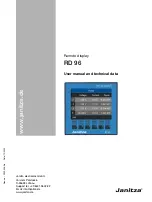
Installation, Operation & Maintenance Instructions
1
API PLAN 74
SEAL SYSTEMS
1. General
1.1 Introduction
Plan 74 may only be installed, commissioned and maintained by an
authorized plant machinery specialist, paying close attention to these
instructions and all other relevant regulations. Failure to do this relieves
the manufactures from any liability or warranties.
This Instruction Manual is provided to familiarize the user with the
Plan 74 arrangement and its use. The instructions must be read and
applied whenever work is done on the Plan 74, and must be available to
operating and maintenance personnel.
These instructions will help to avoid danger and increase reliability. They
should be used with the appropriate mechanical seal Instruction Manual.
The following important terms and definitions are used in this document.
1.2 European and/or UK Declaration of Incorporation
(Machinery Directive 2006/42/EC, and UK SI 2008 No. 1597)
If appropriate this is attached.
1.3 European Declaration of Conformity
(Pressure Equipment Directive, 2014/68/EU)
This directive is not applicable to Plan 74.
1.4 European and/or UK Declaration of Conformity
(ATEX 2014/34/EU, and Equipment and UK SI 2016 No. 1107)
These instructions are intended for use with system operating in
Equipment Group II, category 2GD.
The Declaration covers the complete seal and system and the maximum
surface temperature is recorded in the Mechanical Seal Instruction Manual.
If appropriate this is attached.
2. Safety and Environment
The safety notes refer to the system supplied. They can never be exclusive,
and must be used in connection with the relevant safety regulations for the
machine, auxiliary equipment, plant and sealed product.
2.1 Warning symbols
The following symbols are used in this instruction manual to highlight
information of particular importance:
Danger
Mandatory instructions designed to prevent personal
injury or extensive damage.
Warning of electric current
ATTENTION
Special instructions or information to avoid damage to
the system or its surroundings.
NOTE
Information for easy installation and efficient operation.
Environmental note
Compliance is required with any additional warning signs affixed to the system.
2.2 Safety instructions
ATTENTION
Every working practice that compromises personal safety is to be
avoided. All safety requirements in this document must be strictly
adhered to.
In the event of an operating problem, the machinery must be switched off
immediately and made safe! Problems must be solved promptly.
Ensure suitable protective clothing is used when maintaining the system.
Plan 74 systems are commonly used with dual mechanical seal
configurations to reduce the hazard potential from flammable, explosive,
toxic or lethal process fluids. The intermediate, protective barrier gas, in
certain failure modes, may risk being contaminated by the process fluid.
During any maintenance operation operators must thus assume they will
be exposed to the liquid or gaseous properties of the process fluid and
have suitable protective gloves, clothing, respirators and equipment.
Particular note must be taken of the relevant guidelines for the electrical
installations.
A slight mechanical seal leakage will occur during normal seal operation.
Depending on the duty, this leakage can appear as a gas, a liquid or
a solid. In case of a worn or defective seal the leakage will increase.
The leakage may be hazardous or toxic, and a safe collection system is
required.
Surface temperatures above 60°C/140°F should be protected against
accidental contact.
The equipment sealed by this seal system must be operated within its
recommended design limits.
Compounds containing PTFE, fluorocarbons and perfluoroelastomers
should never be burnt as the fumes and residues are highly toxic. If this
accidentally occurs protective equipment should be worn as hydrofluoric
acid may be present.
Additional equipment/flanges/joint seals used within the system are to
be rated for the appropriate electrical and pressure requirements and are
to be chemically compatible with the barrier gas and process fluid.
•
During venting or draining of the buffer region it should be piped to a
vent or reservoir where it can be safely contained or disposed.
•
All above according to the local legislation.
•
For further information and safe operating limits contact John Crane
•
All periodical maintenance checks have to be in accordance with local
legislation and rules.
All welding or cutting operations are forbidden without permission from
John Crane.
If you are in any doubt please contact your local John Crane office for
further information before proceeding.
2.3 Environmental aspects
2.3.1 Company policy extract
“It is the policy of John Crane to manage its business activities in
an environmentally responsible manner, comply with all relevant
laws and regulations, prevent pollution, and continually improve its
environmental performance, certification to the latest issue of
ISO 14001 ensures compliance.”
























